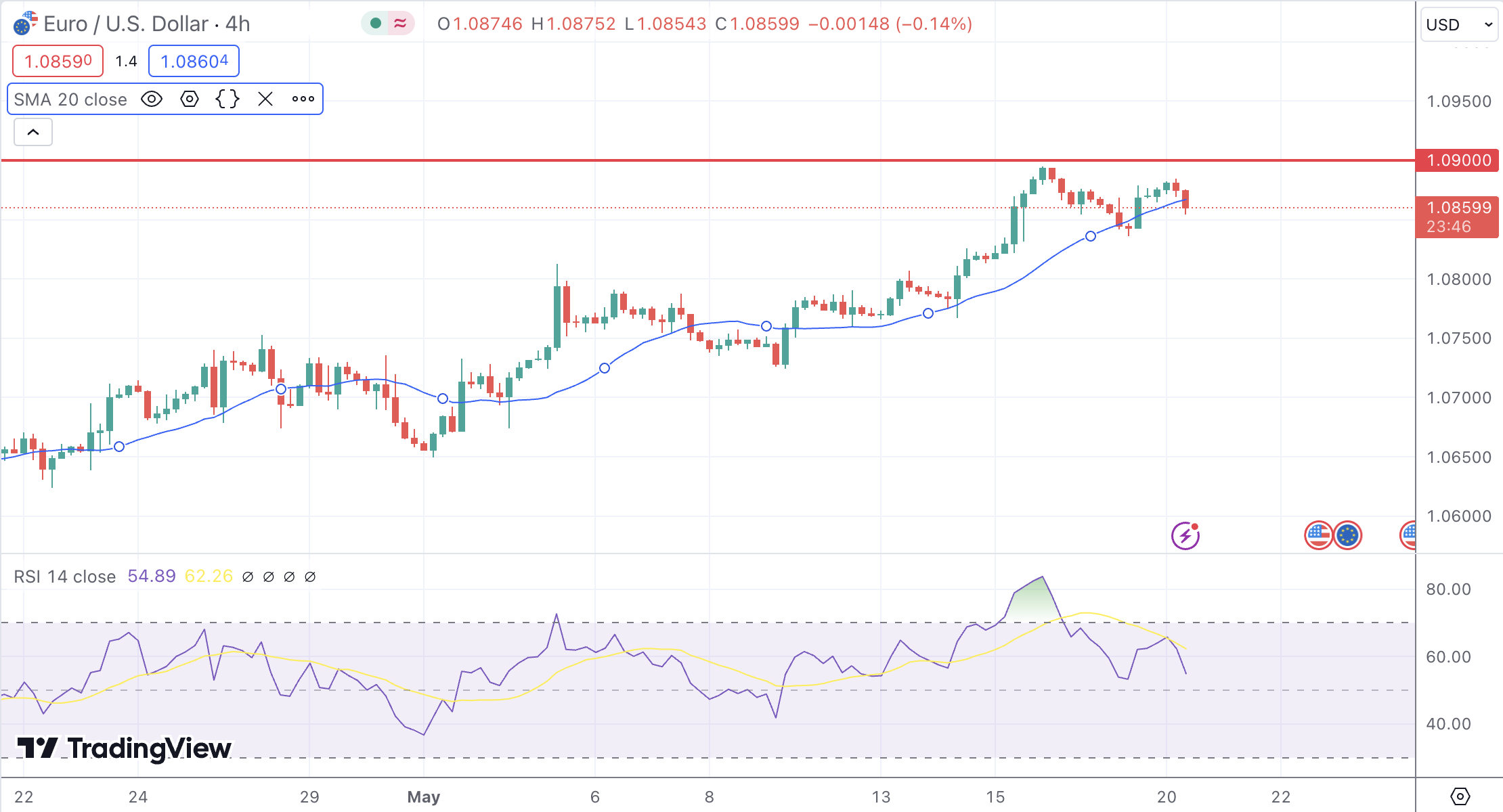Market Dynamics and Recent Performance
Over the past week, the EUR/USD pair has exhibited steady performance, fluctuating within a tight range just below the 1.0900 mark. The pair saw an approximate 1% increase, marking its fifth consecutive week of gains. This positive momentum has been fueled by recent macroeconomic data from the United States, including lower-than-expected consumer and producer inflation figures for April. These data points have reinforced expectations that the Federal Reserve may implement a rate cut in September, weakening the US Dollar and providing support to the Euro.
Technical and Fundamental Influences
From a technical perspective, the EUR/USD maintains a bullish bias in the short term. The pair is trading within an ascending regression channel that started in mid-April, with the Relative Strength Index (RSI) on the 4-hour chart holding above 60. Immediate resistance is positioned around the 1.0890-1.0900 region, which coincides with the Fibonacci 78.6% retracement of the latest downtrend. A successful break above this resistance could see the pair targeting higher levels, such as 1.0940 and 1.0965.
On the downside, key support levels are found at 1.0865, 1.0830, and 1.0810-1.0800. The 20-period Simple Moving Average (SMA) on the 4-hour chart provides dynamic support at 1.0865, while the 50-period SMA and the lower limit of the ascending channel offer additional support around 1.0800.
Fundamental factors also play a significant role in the pair’s performance. The recent drop in US Treasury yields, triggered by weaker-than-expected inflation data, has been a critical driver of the EUR/USD’s strength. Additionally, cautious comments from several Federal Reserve officials about the timing of potential rate cuts have contributed to the US Dollar’s vulnerability. The upcoming week is expected to be relatively quiet in terms of US economic data, which may allow recent foreign exchange movements to consolidate.
Looking Forward
In the week ahead, the EUR/USD is likely to remain sensitive to any shifts in risk sentiment and central bank communications. The absence of high-tier economic data releases means that investors will be closely monitoring speeches from Federal Reserve officials and any developments that could impact market expectations for monetary policy. If the Fed officials emphasize the need for sustained favorable inflation data before considering a policy shift, the US Dollar could find some support, potentially capping the EUR/USD’s upside.
However, if risk sentiment improves and the Euro manages to break above the key resistance at 1.0900, the pair could see further gains. Conversely, if the pair fails to maintain its position above the 1.0865 support level, it could face increased selling pressure, leading to a pullback towards the 1.0810-1.0800 region.
Key Takeaway
The EUR/USD pair continues to navigate a complex landscape of technical and fundamental influences. While the near-term bullish bias remains intact, key resistance at 1.0890-1.0900 will be crucial in determining the pair’s next move. Traders should stay vigilant for any changes in risk sentiment or central bank rhetoric that could impact the pair’s trajectory in the coming week.


